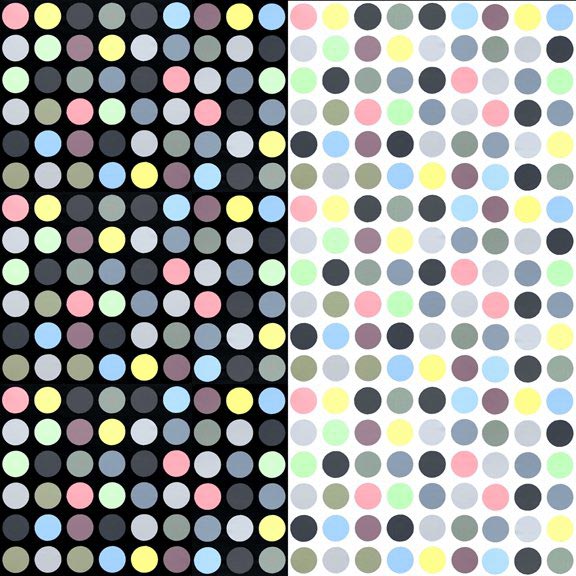Like the pastel portrait artists who drew solitary strokes of color laid down next to the other or each over the other, creating a gamut of complex colors through optical color mixing, Kolker achieves a similar effect with his colored dots. His works are large in scale and modular. He uses fractal graphics programs to fractionate and deconstruct a photographic image into grids of dots, squares, lines, curves or loops. Using screen printing or plotter-scanner vector cuts he reconstructs the image into a painting of fractionated colors. A grid of black or white circumscribes the colored dots, much like the sub-pixels of a liquid crystal display, plasma or LED screen, or the phosphors of the cathode-ray tube as viewed in a dark field. In this manner he creates paintings which appear abstract up close and highly defined when viewed from afar; high definition photographs which are pixellated with dots of solitary colors; and light box sculptures using LED lights and images iterating ad infinitum. This iterative process, employing a reconstruction of fractionated shapes and color, Kolker calls ‘fracolor’ in attribution to Benoit Mandelbrot and his fractal geometry of repeating shapes and forms.
Depicted above are details of two large scale paintings in the show. To the left, tints and shades, bezold noir; and to the right tints and shades, bezold blanc. Each are painted with colors of identical mixing formulas, but one is painted on a black field and the other on white. Each produces a distinctive optical color mixing effect, as originally described by Wilhelm von Bezold more than a century ago.
Also, in the show of thirty works, are a series of ‘ishi eight’ dot paintings, (based on an Ishihara color vision chart testing the viewer’s ability to discern the number eight) in which the artist further explores the aesthetic as well as physiological determinatives of how we perceive color; and how some of us, mainly some men, are color blinded in distinguishing certain tints and shades of red and green.
Paul Kolker: Tints and Shades Redux — Opening reception September 22, 2011.


